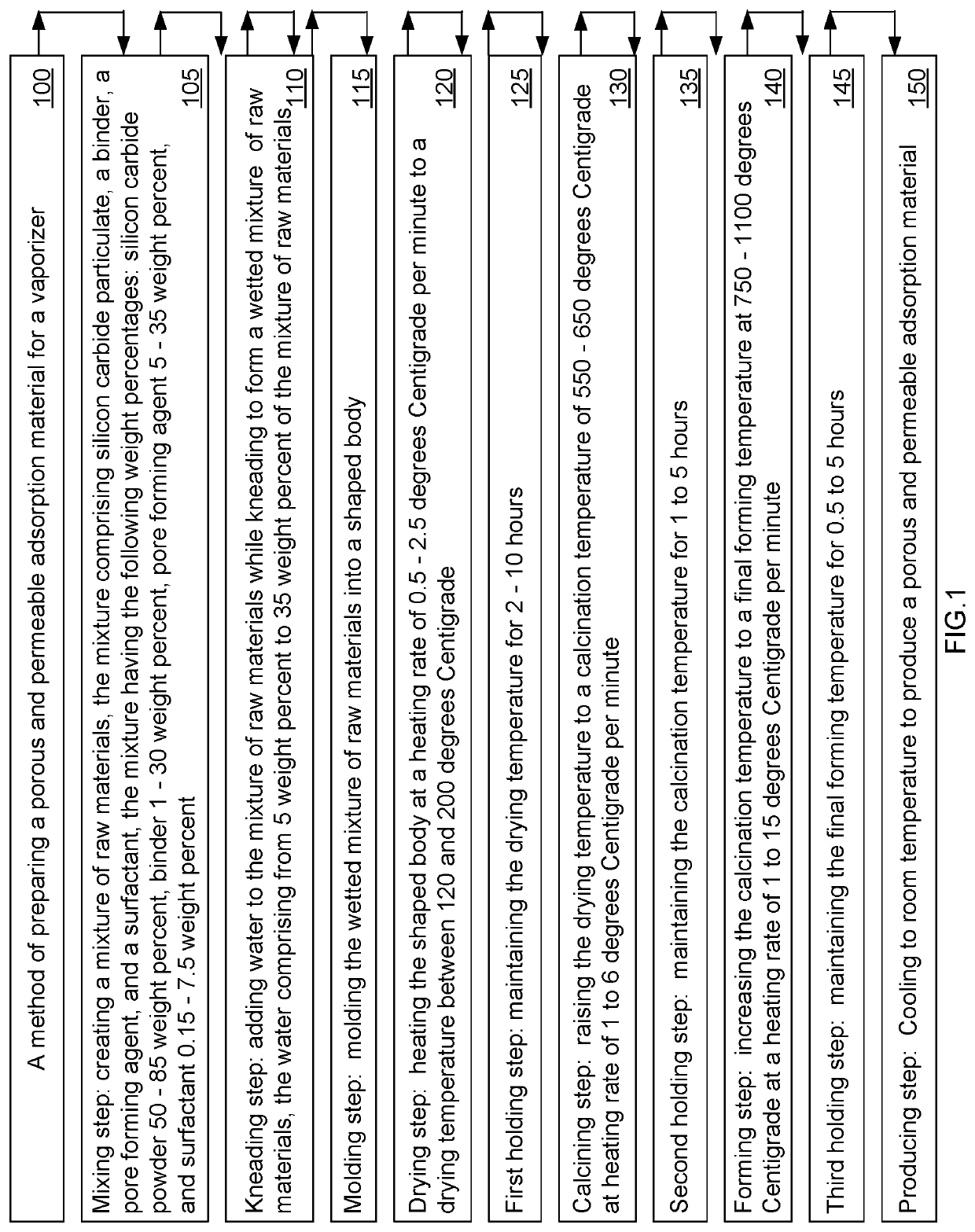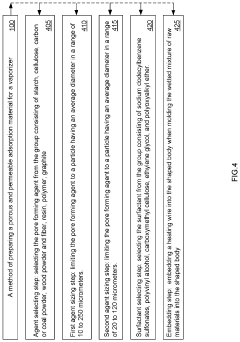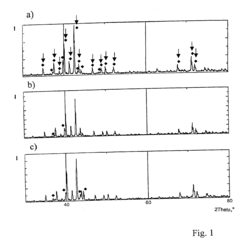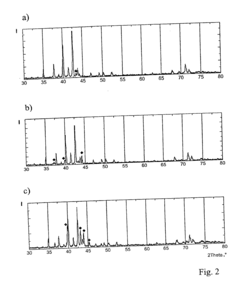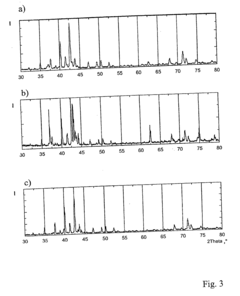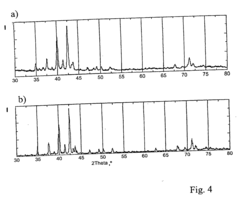How to Understand Quasicrystal's Thermal Conductivity?
Quasicrystal Thermal Conductivity Background
Quasicrystals, discovered in 1982 by Dan Shechtman, represent a unique class of materials that exhibit long-range order but lack periodicity. This discovery challenged the conventional understanding of crystalline structures and opened up new avenues for materials science research. The study of thermal conductivity in quasicrystals has since become a significant area of interest due to their unusual structural properties.
The thermal conductivity of quasicrystals is notably different from that of conventional crystalline materials. Unlike periodic crystals, which typically exhibit high thermal conductivity due to their ordered lattice structure, quasicrystals demonstrate remarkably low thermal conductivity. This characteristic is attributed to their complex, aperiodic structure, which significantly affects phonon propagation.
The aperiodic nature of quasicrystals leads to the formation of localized vibrational modes, often referred to as "phasons." These phasons play a crucial role in the thermal transport properties of quasicrystals. They act as scattering centers for phonons, the primary carriers of heat in solids, thereby reducing the overall thermal conductivity of the material.
Research into quasicrystal thermal conductivity has revealed that these materials often exhibit thermal conductivity values comparable to those of amorphous solids or glasses. This is particularly intriguing given that quasicrystals possess long-range order, albeit without periodicity. The low thermal conductivity of quasicrystals has potential applications in thermal barrier coatings and thermoelectric materials.
The temperature dependence of thermal conductivity in quasicrystals also differs from that of conventional crystals. While crystalline materials typically show a decrease in thermal conductivity with increasing temperature due to increased phonon scattering, quasicrystals may exhibit more complex behavior. Some quasicrystals show relatively little change in thermal conductivity over a wide temperature range, a property that could be advantageous in certain applications.
Understanding the thermal conductivity of quasicrystals requires a multidisciplinary approach, combining principles from solid-state physics, materials science, and thermodynamics. Advanced experimental techniques, such as time-domain thermoreflectance and the 3ω method, have been crucial in accurately measuring the thermal properties of these complex materials.
Computational methods, including molecular dynamics simulations and density functional theory calculations, have also played a significant role in elucidating the mechanisms of thermal transport in quasicrystals. These theoretical approaches help in modeling the complex atomic arrangements and phonon interactions that govern thermal conductivity in these materials.
Market Applications of Quasicrystals
Quasicrystals, with their unique atomic structure and properties, have found applications in various market sectors, leveraging their distinctive characteristics. In the automotive industry, quasicrystals are utilized as coatings for engine components, enhancing wear resistance and reducing friction. This application improves fuel efficiency and extends the lifespan of critical engine parts, contributing to overall vehicle performance and sustainability.
The aerospace sector has also embraced quasicrystal technology, particularly in the development of thermal barrier coatings for turbine blades. These coatings provide superior heat resistance and thermal insulation, allowing engines to operate at higher temperatures and improving overall efficiency. The low thermal conductivity of quasicrystals makes them ideal for this application, as they can withstand extreme temperature conditions while maintaining structural integrity.
In the field of renewable energy, quasicrystals have shown promise in thermoelectric devices. Their unique electronic properties and low thermal conductivity make them suitable for converting waste heat into electricity. This application has potential in various industries, including automotive and manufacturing, where significant amounts of heat are generated as a byproduct of processes.
The consumer electronics market has also begun to explore quasicrystal applications. Their electromagnetic properties make them suitable for use in antennas and electromagnetic shielding materials. This can lead to improved signal reception and reduced electromagnetic interference in electronic devices, enhancing overall performance and user experience.
In the medical field, quasicrystals have found applications in surgical instruments and implants. Their biocompatibility, combined with their hardness and wear resistance, makes them suitable for long-lasting medical devices. Additionally, their unique surface properties can potentially reduce bacterial adhesion, making them valuable in preventing infections associated with medical implants.
The hydrogen storage industry is another area where quasicrystals show promise. Their complex atomic structure creates numerous interstitial sites that can potentially store hydrogen atoms efficiently. This property could lead to the development of more effective hydrogen storage materials, supporting the growth of hydrogen-based energy systems.
Quasicrystals also have potential applications in the field of photonics. Their aperiodic structure can create photonic band gaps, allowing for the manipulation of light in ways not possible with traditional crystalline materials. This property could lead to advancements in optical computing, telecommunications, and sensing technologies.
Current Challenges in Thermal Conductivity Measurement
The measurement of thermal conductivity in quasicrystals presents several unique challenges due to their complex atomic structure and unusual physical properties. One of the primary difficulties lies in the preparation of high-quality, large-scale quasicrystal samples suitable for accurate thermal conductivity measurements. The inherent structural complexity of quasicrystals often leads to the formation of defects and impurities during synthesis, which can significantly affect thermal transport properties.
Another major challenge is the anisotropic nature of thermal conductivity in quasicrystals. Unlike conventional crystalline materials, quasicrystals exhibit directional dependence in their thermal properties, making it crucial to consider orientation when conducting measurements. This anisotropy complicates the interpretation of experimental results and requires sophisticated measurement techniques to fully characterize the thermal behavior.
The presence of phasons, unique excitations found in quasicrystals, adds another layer of complexity to thermal conductivity measurements. These collective motions of atoms can contribute to heat transport in ways that are not fully understood, making it difficult to separate their effects from other thermal transport mechanisms.
Temperature dependence poses yet another challenge in measuring quasicrystal thermal conductivity. The unusual electronic structure of quasicrystals can lead to non-linear temperature dependencies, requiring measurements across a wide range of temperatures to fully capture their thermal behavior. This necessitates specialized equipment capable of maintaining stable conditions over extended temperature ranges.
The low thermal conductivity of many quasicrystals also presents measurement difficulties. Traditional steady-state methods may not provide sufficient sensitivity for accurate measurements, necessitating the use of more advanced transient techniques. However, these methods often require careful calibration and can be sensitive to sample surface conditions and contact resistances.
Lastly, the lack of standardized measurement protocols specifically tailored for quasicrystals complicates the comparison of results between different research groups. This absence of standardization can lead to discrepancies in reported values and hinder the development of a comprehensive understanding of quasicrystal thermal properties.
Addressing these challenges requires a multifaceted approach, combining advanced sample preparation techniques, sophisticated measurement methods, and careful data analysis. Collaborative efforts between materials scientists, physicists, and thermal engineers are essential to overcome these obstacles and advance our understanding of thermal conductivity in quasicrystals.
Existing Methods for Thermal Conductivity Analysis
01 Thermal conductivity measurement of quasicrystals
Methods and devices for measuring thermal conductivity in quasicrystalline materials. These techniques allow for precise characterization of heat transfer properties in complex atomic structures, which is crucial for understanding and optimizing the thermal behavior of quasicrystals.- Thermal conductivity measurement of quasicrystals: Various methods and devices are developed to measure the thermal conductivity of quasicrystalline materials. These techniques allow for accurate characterization of the unique thermal properties of quasicrystals, which can be significantly different from conventional crystalline materials.
- Quasicrystalline coatings for thermal management: Quasicrystalline materials are used as coatings to enhance thermal management in various applications. These coatings can provide unique combinations of thermal conductivity and other properties, making them suitable for specific thermal control requirements.
- Quasicrystal-based thermoelectric materials: Quasicrystalline structures are explored for their potential in thermoelectric applications. Their unique atomic arrangements can lead to favorable combinations of electrical and thermal conductivity, potentially improving the efficiency of thermoelectric devices.
- Thermal properties of quasicrystal-reinforced composites: Composite materials incorporating quasicrystalline phases are developed to achieve specific thermal conductivity characteristics. These composites can offer tailored thermal properties for various industrial applications.
- Influence of quasicrystalline structure on phonon transport: Research is conducted on how the unique atomic structure of quasicrystals affects phonon transport and, consequently, thermal conductivity. Understanding these mechanisms can lead to the design of materials with precisely controlled thermal properties.
02 Quasicrystalline coatings for thermal management
Application of quasicrystalline materials as coatings to enhance thermal management in various systems. These coatings can provide unique combinations of thermal insulation and conductivity properties, making them valuable for aerospace, automotive, and industrial applications.Expand Specific Solutions03 Synthesis of quasicrystals with tailored thermal properties
Methods for synthesizing quasicrystals with specific thermal conductivity characteristics. This includes techniques for controlling composition, structure, and defects to achieve desired thermal behavior, enabling the development of materials for specific thermal management applications.Expand Specific Solutions04 Quasicrystal-based thermoelectric materials
Development of thermoelectric materials incorporating quasicrystalline structures. These materials can exhibit unique combinations of electrical and thermal properties, potentially leading to improved efficiency in thermoelectric devices for energy harvesting and cooling applications.Expand Specific Solutions05 Modeling and simulation of thermal transport in quasicrystals
Computational methods and models for predicting and analyzing thermal transport phenomena in quasicrystalline materials. These tools aid in understanding the fundamental mechanisms of heat conduction in complex atomic arrangements and guide the design of new quasicrystalline materials with optimized thermal properties.Expand Specific Solutions
Key Players in Quasicrystal Research
The thermal conductivity of quasicrystals represents an emerging field of study, currently in its early developmental stages. The market for quasicrystal applications is still relatively small but growing, driven by potential uses in thermoelectric devices and thermal management systems. The technology's maturity is evolving, with research institutions like Wuhan University of Technology, Xi'an Jiaotong University, and Dalian University of Technology leading academic investigations. Companies such as Zing Semiconductor Corporation and SUMCO Corp. are exploring industrial applications, while research organizations like Consejo Superior de Investigaciones Científicas contribute to fundamental understanding. As the field progresses, collaborations between academia and industry are likely to accelerate technological advancements and market expansion.
Wuhan University of Technology
Xi'an Jiaotong University
Core Innovations in Quasicrystal Thermal Properties
- A method involving the preparation of a porous and permeable adsorption material using silicon carbide powder, a low melting-temperature binder, and a pore-forming agent, with specific weight percentages and processing steps to achieve high thermal conductivity and porosity, ensuring uniform heat transfer and vaporization.
- A novel quasicrystalline compound with a nominal composition of Ti.sub.vCr.sub.wAl.sub.xSi.sub.yO.sub.z, where v=60-65, w=25-30, x=0-6, y=8-15, and z=8-20, with specific atom percent ranges for oxygen and aluminum, forming an icosahedral or approximant structure that acts as a diffusion barrier and thermal carrier, enhancing stability and mechanical properties.
Computational Modeling of Quasicrystal Structures
Computational modeling of quasicrystal structures has become an essential tool for understanding the unique properties of these materials, including their thermal conductivity. The complexity of quasicrystals, characterized by their long-range order without periodicity, presents significant challenges for traditional modeling approaches.
One of the primary methods employed in computational modeling of quasicrystals is the use of approximant structures. These are periodic structures that closely resemble the local atomic arrangements found in quasicrystals. By studying these approximants, researchers can gain insights into the behavior of quasicrystals while leveraging existing computational techniques designed for periodic systems.
Molecular dynamics simulations play a crucial role in investigating the thermal properties of quasicrystals. These simulations allow researchers to track the motion of individual atoms and analyze how heat propagates through the material. By applying temperature gradients and measuring heat flux, it becomes possible to calculate the thermal conductivity of quasicrystal structures.
Density functional theory (DFT) calculations are another valuable tool in the computational modeling of quasicrystals. DFT can provide accurate electronic structure information, which is essential for understanding the bonding characteristics and phonon properties of these materials. This information is crucial for developing accurate interatomic potentials used in molecular dynamics simulations.
The development of specialized algorithms for generating and analyzing quasicrystal structures has been a significant advancement in computational modeling. These algorithms often utilize higher-dimensional projection methods to create realistic quasicrystal models, which can then be studied using various computational techniques.
Machine learning approaches are increasingly being applied to the study of quasicrystals. These methods can help identify patterns and relationships in the vast amount of data generated by simulations, potentially leading to new insights into the structure-property relationships of quasicrystals.
Computational modeling has also enabled the exploration of hypothetical quasicrystal structures, allowing researchers to predict and design materials with desired thermal properties. This predictive capability is particularly valuable given the challenges associated with experimental synthesis and characterization of quasicrystals.
As computational power continues to increase, more sophisticated models incorporating larger system sizes and longer simulation times are becoming feasible. This advancement is crucial for capturing the long-range order and complex dynamics characteristic of quasicrystals, leading to more accurate predictions of their thermal conductivity and other properties.
Environmental Impact of Quasicrystal Materials
The environmental impact of quasicrystal materials is a crucial aspect to consider as these unique structures gain prominence in various applications. Quasicrystals, with their aperiodic yet ordered atomic arrangements, exhibit distinct thermal properties that can significantly influence their environmental footprint.
One of the primary environmental considerations is the energy efficiency of quasicrystal-based materials. Their unique thermal conductivity characteristics can lead to improved insulation in buildings and industrial processes, potentially reducing energy consumption and associated greenhouse gas emissions. This property makes quasicrystals promising candidates for developing more sustainable thermal management solutions.
However, the production of quasicrystals often involves energy-intensive processes and the use of rare or exotic elements. This raises concerns about resource depletion and the environmental impact of mining and refining these materials. As research progresses, it is essential to develop more sustainable production methods that minimize the use of scarce resources and reduce energy requirements.
The durability and corrosion resistance of quasicrystals can contribute to longer-lasting products, potentially reducing waste and the need for frequent replacements. This longevity could lead to a decrease in the overall environmental impact associated with manufacturing and disposal of materials over time.
Recycling and end-of-life management of quasicrystal materials present both challenges and opportunities. Their complex composition may make traditional recycling methods less effective, necessitating the development of specialized recycling processes. On the other hand, their unique properties could make them valuable for reclamation and reuse in various applications, promoting a more circular economy approach.
The potential use of quasicrystals in catalytic converters and other pollution control devices could have a positive environmental impact by improving air quality and reducing harmful emissions. Their unique surface properties and stability at high temperatures make them promising candidates for enhancing the efficiency of catalytic processes.
As quasicrystals find applications in renewable energy technologies, such as thermoelectric devices and solar cells, they could contribute to the transition towards cleaner energy sources. However, the environmental benefits of these applications must be weighed against the potential impacts of quasicrystal production and disposal.
In conclusion, while quasicrystals offer promising environmental benefits through their unique properties, a comprehensive life cycle assessment is necessary to fully understand their net environmental impact. Ongoing research and development should focus on optimizing production processes, exploring sustainable sourcing options, and developing effective recycling strategies to maximize the positive environmental potential of quasicrystal materials.
